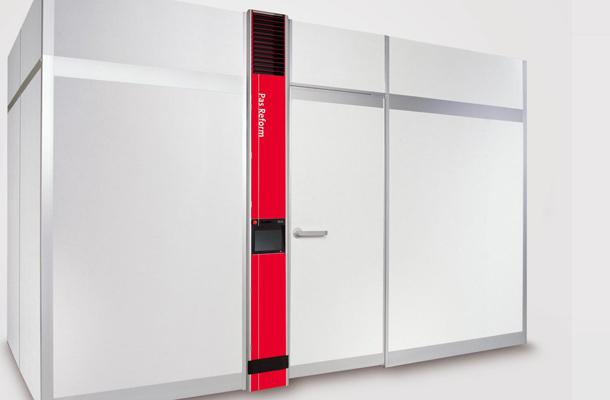Let your setters sleep...
Tags: Incubation | Whitepaper
, June 10 2015

The ideal status of a working setter is just ‘sleeping’. Parameters are being maintained in all sections, but no climate device is really active. Internal climate is balanced simply by using the heat and humidity produced by the eggs with precise ventilation control.
This is the ideal scenario in terms of equipment and energy efficiency, to create an optimised environment for incubation. But in practice, this is not so easy. The larger the setter, the more difficult it becomes to achieve this balance, due to some basic and unavoidable physical principles, including:
- cold air is heavier than warm air
- air in flow has a chilling effect which becomes more pronounced as air speed increases
- obstacles reduce air flow
- evaporating water takes heat from the air and creates a cold spot
- heating increases air temperature by convection and by radiation
To deliver an accurate incubation program, the setter is equipped with technical devices, such as heaters, coolers and humidifiers. These respond to current program requirements and work fairly intensively.
In a single stage setter, the need for fresh air varies, increasing quickly after 10 days of incubation. At that point, the embryos start to produce more metabolic heat, which has to be absorbed by the cooling system or removed with used air.
If air exchange is overly intensive during early incubation, the setter will respond with increased heater activity. Although set points are maintained, eggs placed next to heaters that are working continually are exposed to higher than optimum temperature due to local heat radiation.
Over-ventilation during the last ten days of incubation activates the humidifiers and permanent, localised evaporation creates a cold area. This temperature variation accelerates or decelerates the development of the embryos, finally contributing to a broadened hatch window that will compromise chicken quality.
Growing embryos require an increasing supply of fresh air, which while necessary for life, is also the main destabilising factor for the environment inside the cabinet.
With insufficient ventilation, embryos will suffer or even die. If ventilation is too intensive, too much fresh air enters the cabinet. This then forces the controllers to adapt to programme parameters by increasing the activity of heaters and humidifiers. The temperature of the fresh air taken by the machine is usually in a range of 21-27°C, with humidity at 45-60%. Inside the setter, we are aiming for a temperature of around 37.8 °C with 45-60% humidity.
Heater, cooler and humidifier can be compared to our neighbours: we need and like them – if they are quiet and gentle. But a neighbour who keeps us awake with constant parties and loud music is not a good one.
Advice
- Pay attention to what the machine is doing. Parameters should be maintained with minimal effort.
- Control ventilation and measure air freshness using the CO2 sensor: 0.4% is a very safe level. An ideal solution is to control the ventilation level automatically, based on measured RH and CO2 according to actual embryo requirements.
- Make it easy for the machine: do not ask too much! If humidifiers tend to work hard in the final phase of incubation, optimize the climate conditions of inlet air.
- Apply an incubation program with a lower RH set point in the last days of incubation if optimizing inlet air is not enough, balanced by a higher RH at the beginning. Reaching 45% RH is easier than reaching 53%.
- Adjust ventilation set point if the setter is not fully loaded.
- Let the setter ‘sleep’ for optimum performance.